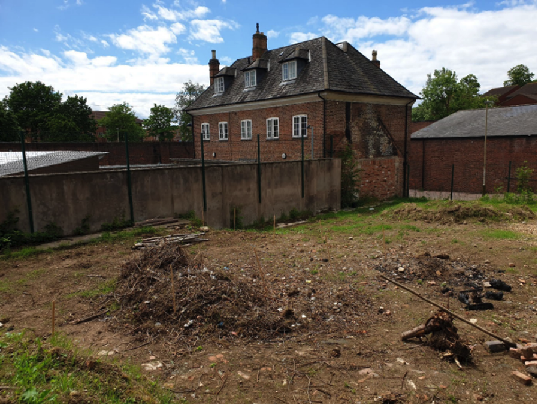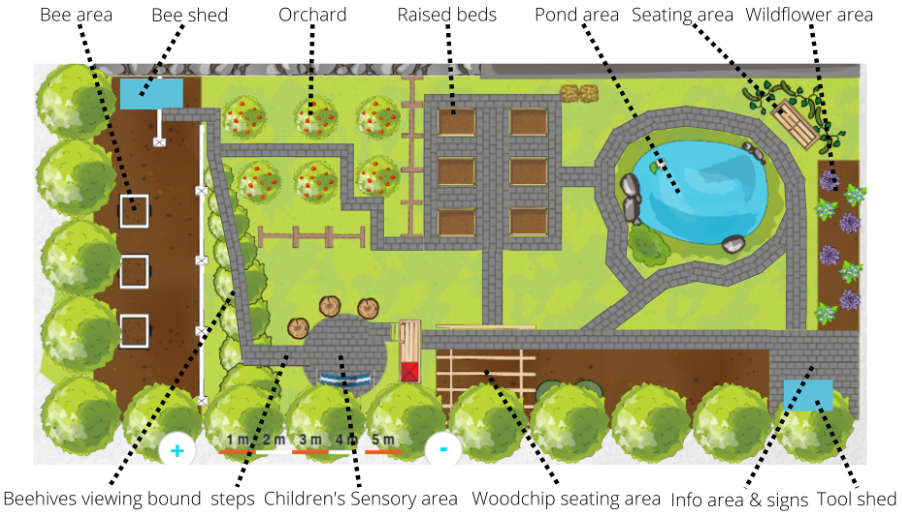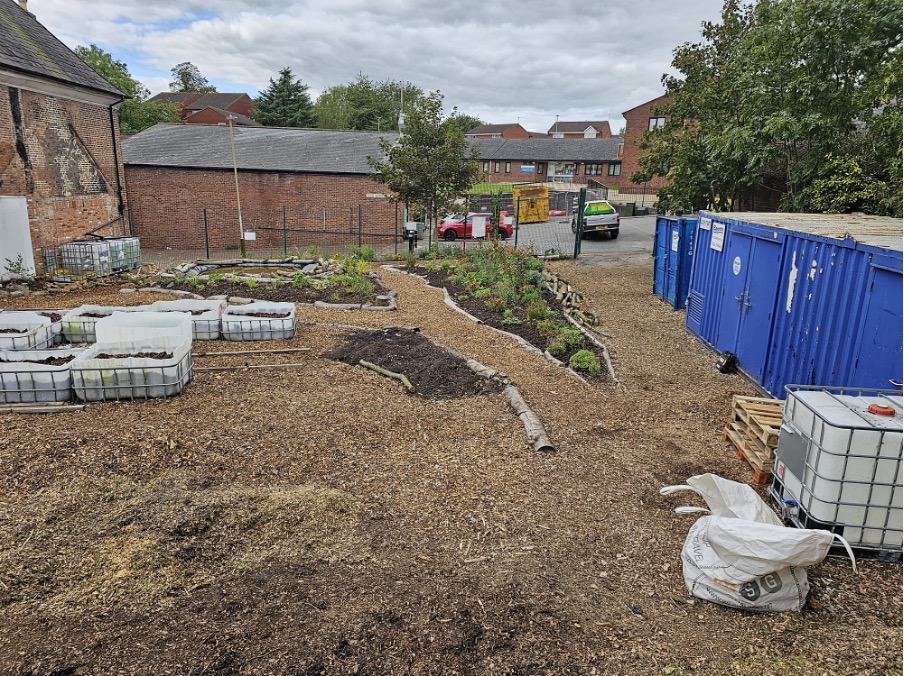The Power of Community Gardens in Beaumont Leys 2022-2023
In the heart of Beaumont Leys, Leicester, a remarkable transformation is taking place. The once-neglected plot of land, now known as The Urban Garden, is emerging as a symbol of hope and community resilience. This transformation is the result of collaborative efforts from various organisations, including the Cooke E-Learning Foundation (E2), Enstruct, The Conservation Volunteers, and the local business Samworth Brothers. In this article, we explore the key themes and insights from Adriana Massidda's paper, (see link at the end of this article), along with co-authors Can Ozerdem and Nwakaego Onyenokporo, shedding light on the inspiring story of The Urban Garden.

Fig. 1. The site after the first rearrangements of hardcore and rubble. Credits: Nwakaego Onyenokporo and Robert Dargue, June 2022
Community-Led Transformation: The Urban Garden project is a shining example of a community-led transformation. Residents of Beaumont Leys, with support from E2 and other NGOs, envisioned repurposing a derelict site. Initially considering a sports field, the local council suggested a garden instead. This shift in focus from sports to greenery highlights the adaptability and responsiveness of community initiatives.
Reusing Waste and Sustainable Practices: The project's sustainable ethos is striking. Rather than disposing of waste materials, volunteers reused them on-site. This eco-conscious approach not only reduced costs but also minimised the environmental impact of the project. Rainwater collection systems, vegetable patches, and a sensory area showcase the garden's commitment to sustainable practices.
Empowering the Community: The Urban Garden extends beyond greenery. It serves as a space for education and skill development. Information boards with QR codes provide valuable insights, and the process of designing and maintaining the garden empowers volunteers to expand their skills, enhancing their employability. This commitment to knowledge sharing strengthens community bonds.
Addressing Environmental Challenges: The project also faced environmental challenges, particularly soil contamination. Collaborating with researchers from the Health and Life Sciences faculty of De Montfort University, the team conducted soil analysis. While they discovered higher levels of metals than ideal, the bioavailability of these metals was crucial in assessing potential harm.

Fig. 2. Urban Garden layout. Credits: Enstruct, May 2022.
Micro-Scale Actions for Macro Impact: Adriana Massidda's paper (see link below) emphasises the potential of micro-scale actions to drive change in disadvantaged communities like Beaumont Leys. While broader issues of stigmatisation, pollution, and poverty persist, The Urban Garden's creation fosters community ties and offers a sense of hope for the area's prosperity.

Fig. 3. Urban Garden September 2023. Credits: Martin Buchanan.
Conclusion: The story of The Urban Garden is a testament to the power of collaboration, sustainability, and community engagement. It exemplifies how a neglected piece of land can become a vibrant, educational, and environmentally conscious space that empowers residents and revitalises a community. Adriana Massidda's paper, along with co-authors Can Ozerdem and Nwakaego Onyenokporo, sheds light on the transformative journey of The Urban Garden in Beaumont Leys, reminding us that small actions can have a big impact on urban spaces and the people who inhabit them.
References:
- Massidda, Adriana, Can Ozerdem, and Nwakaego Onyenokporo. "Transforming Urban Spaces: The Power of Community Gardens in Beaumont Leys." https://drive.google.com/file/d/1t5Utm7HTXZY-aF2zSyn-WtHBk-k1L_FS/view?usp=sharing